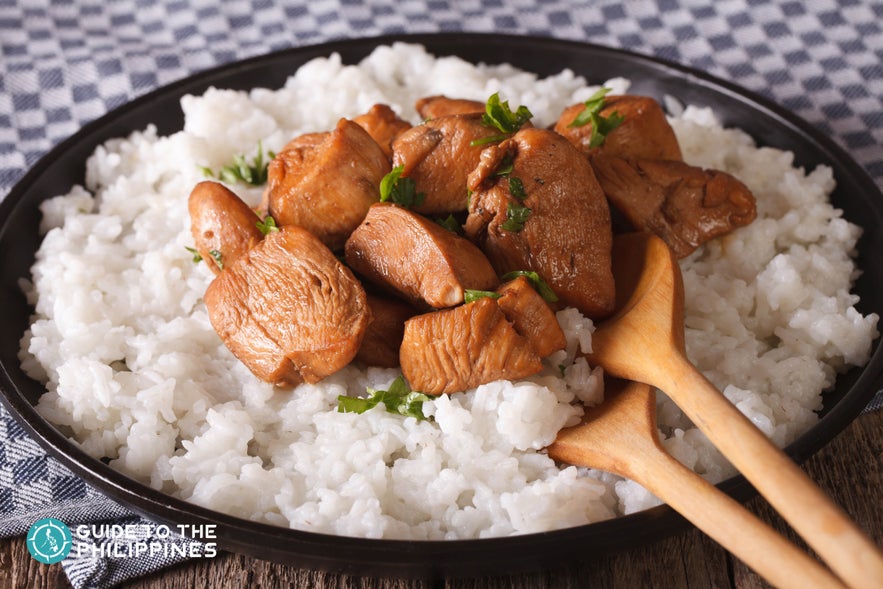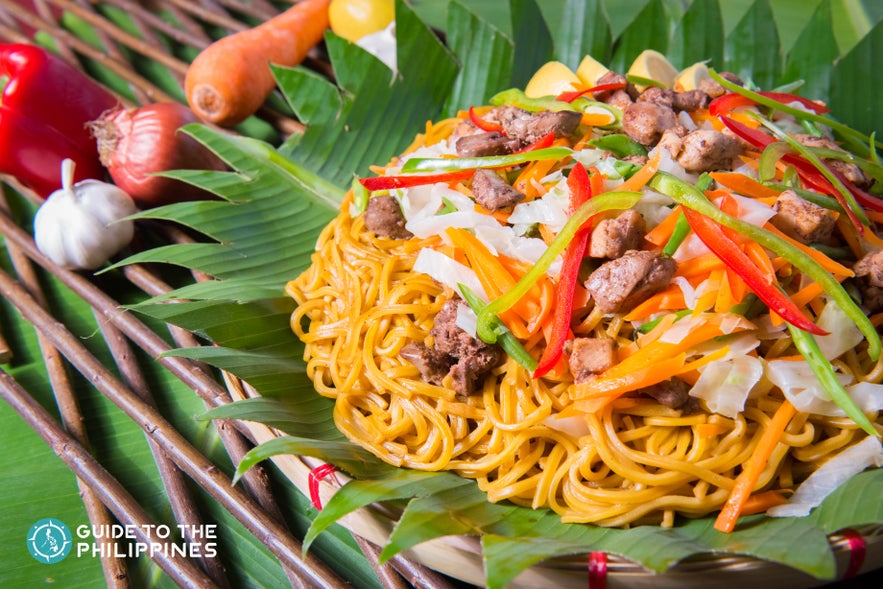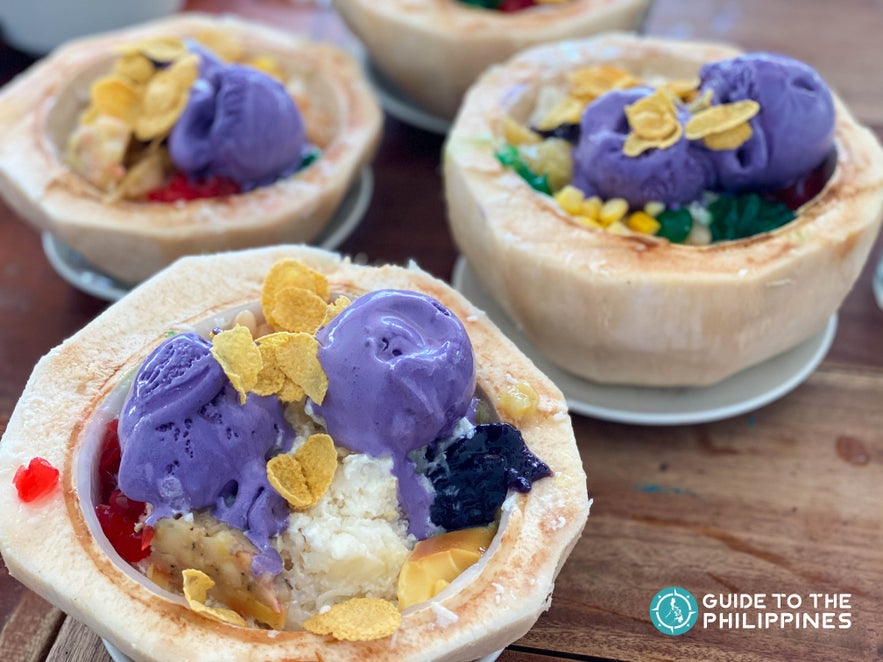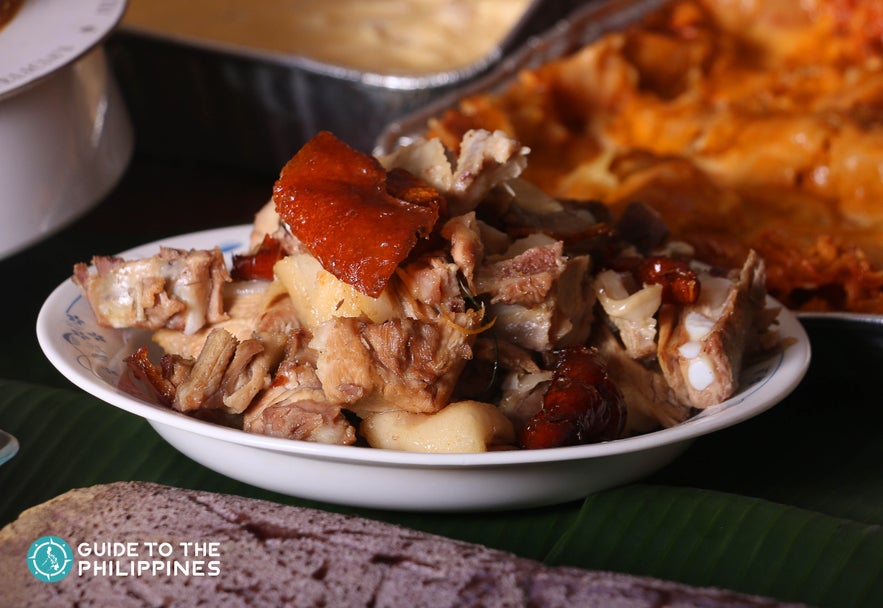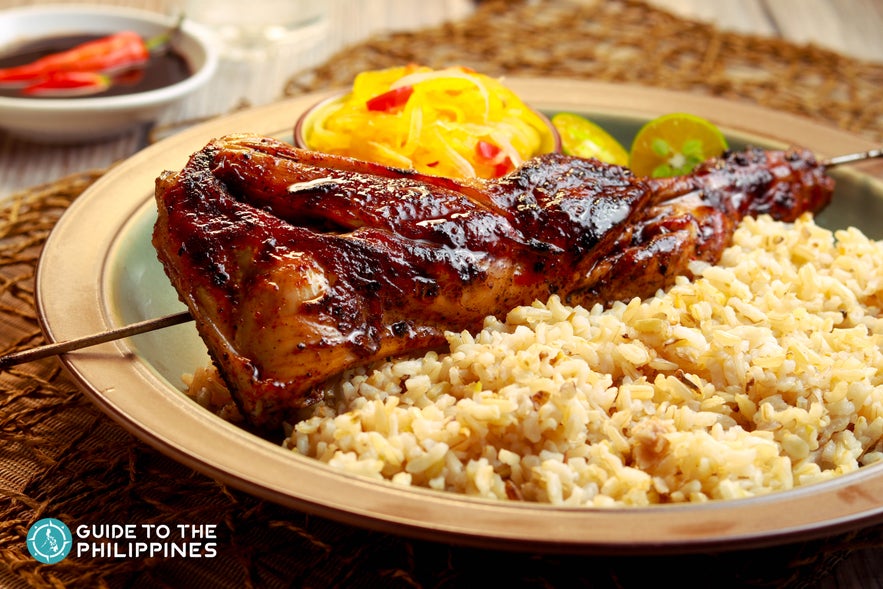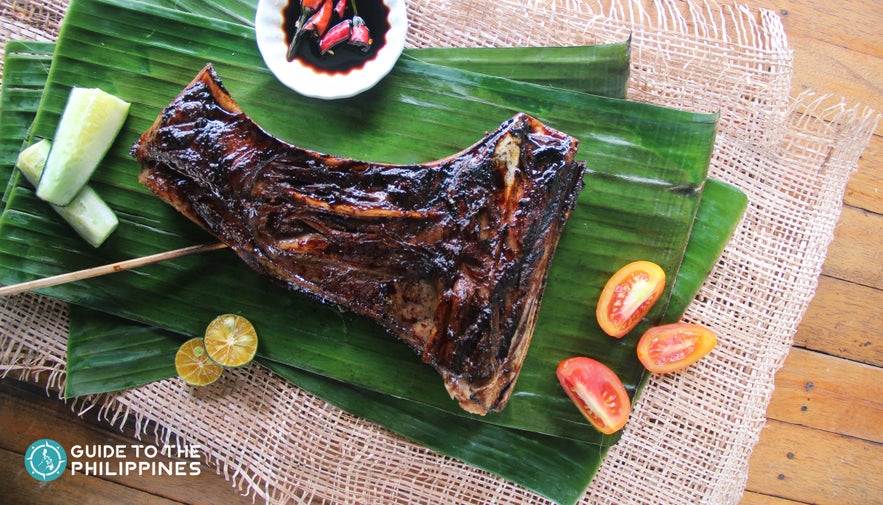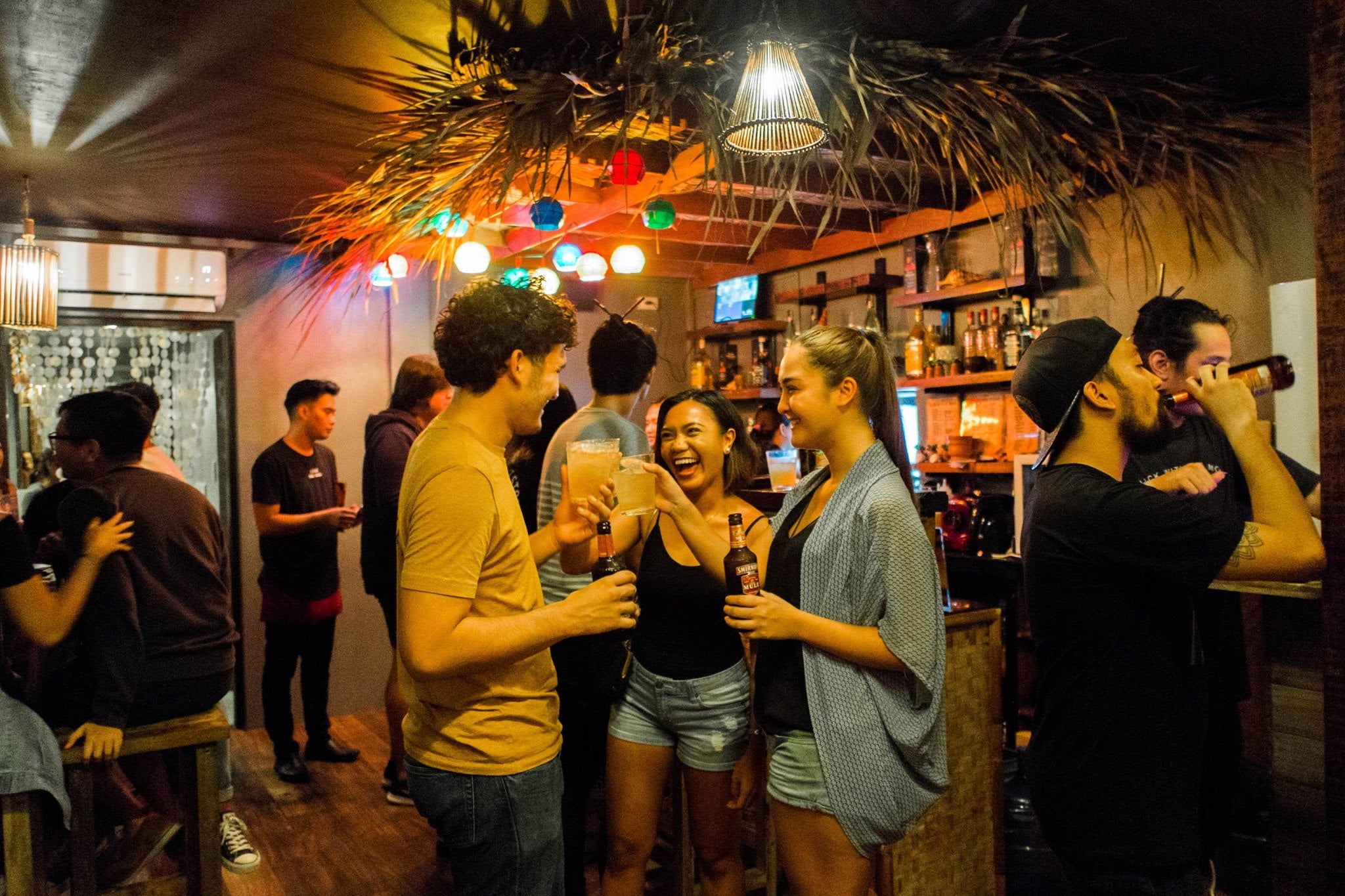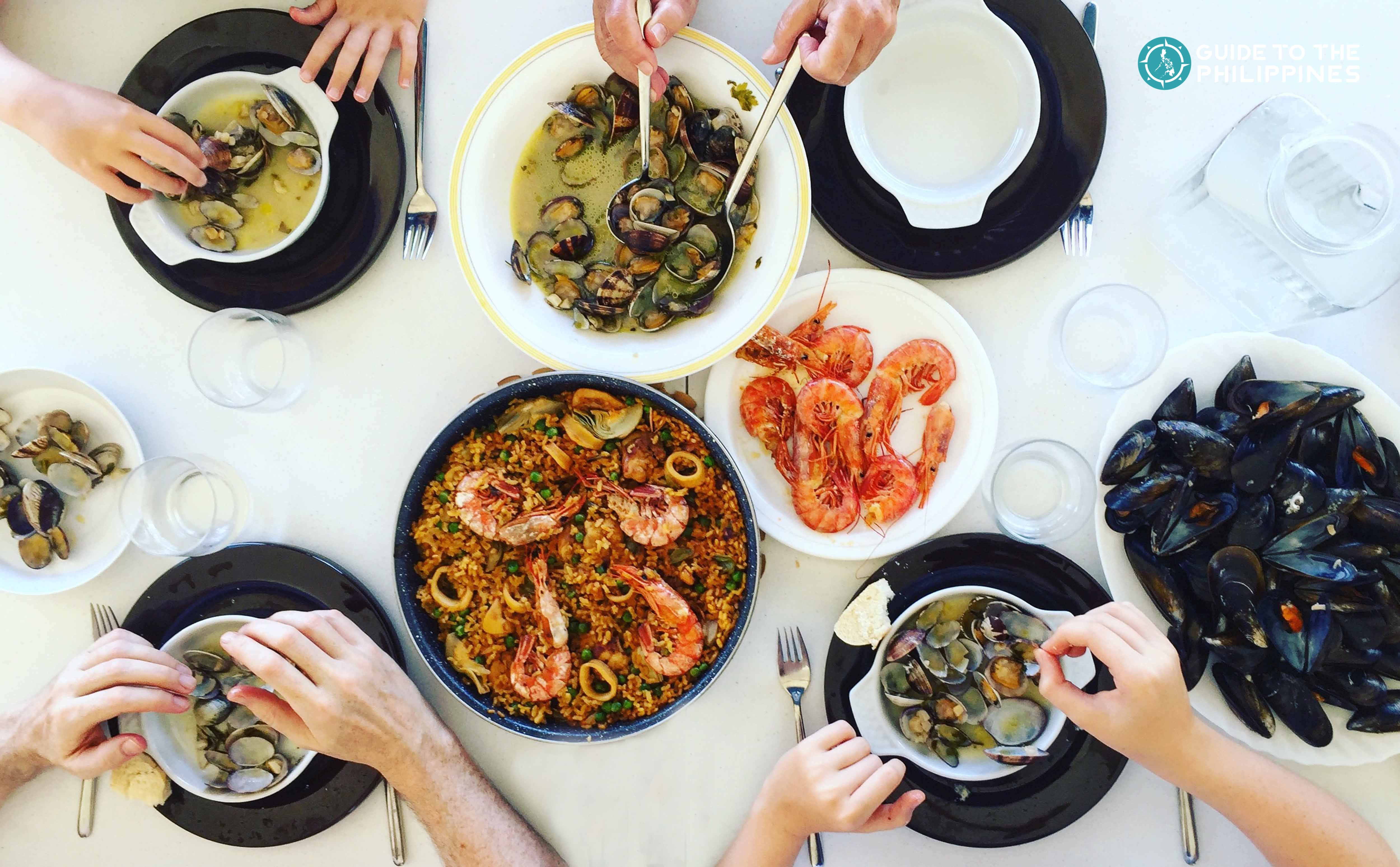
While the cuisine of the Philippines is one of the world’s most distinct, giving momentum to the numerous culinary and food tours in the country, it had, until lately, been quite mysterious that it’s prone to misunderstanding or misrepresentation.
To understand why, it’s important to understand the Philippines' food culture, background, and its multiple influences.
Origins of Philippine Cuisine and Food Culture
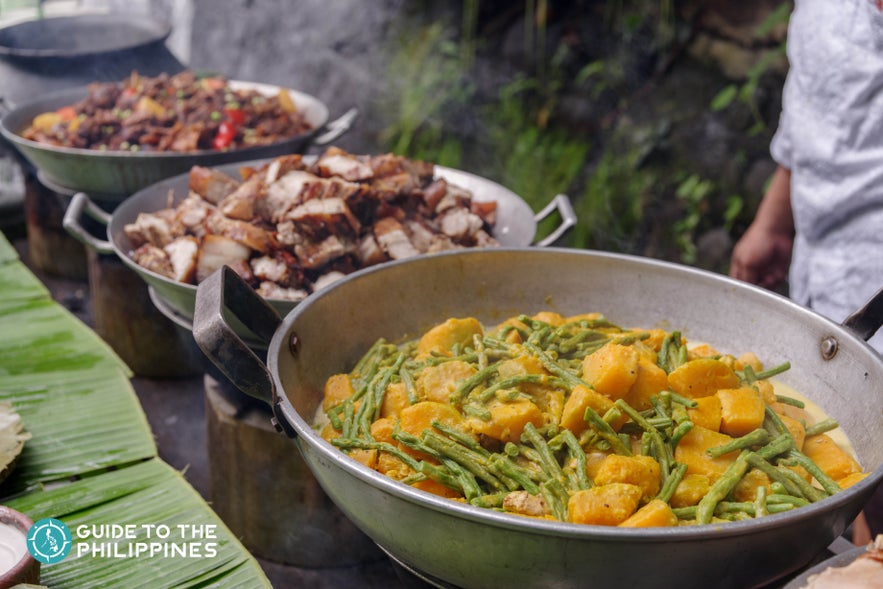
Some would like to call Filipino food, “one of the world’s earliest fusion cuisines,” and while that may be true up to a certain point, it may also be an oversimplification.
Most Filipino dishes and delicacies began with their creators making use of whatever ingredients they could find (usually within a 1-2 mile radius) and creating a dish from those ingredients.
With the Philippines being one of the world’s largest archipelagos, Filipino cuisine and Philippine traditional food is highly local and regional.
This not only means that there are hundreds (if not thousands) of individually different dishes but also there are some Filipino dishes served throughout the country, but often have different preparations and even names.
Influences of Filipino Food
Philippine cuisine and food culture have several foreign influences that have successfully melded with local, indigenous cuisine.
Indigenous Filipino food is heavily influenced by Chinese cuisine, brought along by the various traders and later on, Chinese immigrants mainly from Fujian region of China and the Cantonese.
Filipino food is also heavily influenced by the cuisine of its different colonizers like the Spanish, who ruled the Philippines for 300 years, the Americans, who ruled the Philippines for a number of decades, the Japanese, who ruled a few years during World War II, and the British for a couple of years (bringing along Indian workers with them).
There are also Mexican influences as workers and traders from the galleon trades brought ingredients and dishes to Philippine shores. Plus, there are native food from the country’s Islamic regions, which were influenced by the neighboring Southeast Asian countries.
By virtue of it being local, regional, seasonal, and being influenced by a number of different foreign cuisines, cataloging Filipino dishes is a little bit of a challenge, especially for foreigners.
This also means that it is difficult to truly define Filipino food in just a few sentences but there are some basics to give you a clearer picture.
Basics of Food from the Philippines: What is Filipino Food?
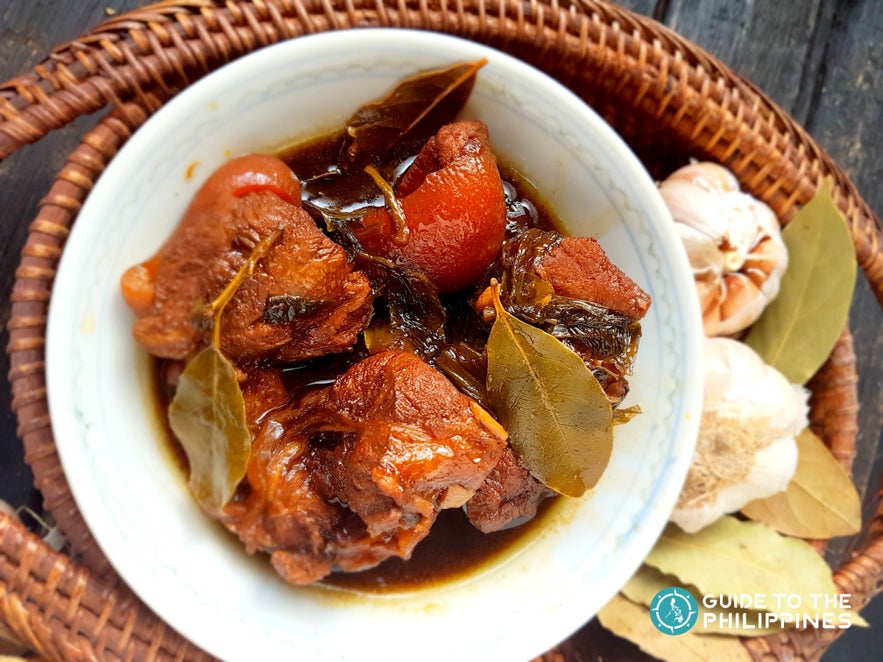
1. Most Filipino dishes and some of the most famous food in the Philippines are named for cooking techniques and not specific ingredients or dishes. For example, the Philippine traditional food and iconic dish "adobo" refers to the technique of stewing in vinegar with peppercorns and bay leaf.
This means saying adobo could mean a host of different dishes. When ordering, it’s better to be more specific like chicken adobo, pork adobo, or adobong pusit (squid adobo).
2. Unlike the rest of Southeast Asia, Filipino food is rarely spicy. Instead, most Filipino dishes are a combination of salty, sour, sweet and bitter. Most of the spicy dishes are found in just 2 main regions, the province of Bicol and in the Muslim areas of Mindanao
3. Among the flavors, sourness is the most prevalent in native food in the Philippines. Filipinos draw sour flavors from 3 main sources, fruits, leaves, and fermentation.
4. The Philippines has one of the most varied selections of vinegar in the world. Varieties include coconut sap, pineapple, sugar cane, palm, and banana among others.
5. The best food in the Philippines like adobo, sinigang, and kare-kare are best enjoyed with rice. Filipinos enjoy each meal with one form of rice or another, even snacks and breakfast.

6. Before you plan your food trip in the Philippines, take note that Filipinos could eat as much as 5-7 times a day. Early breakfast, breakfast, morning snack, lunch, afternoon snack, dinner, and pulutan (small bites while drinking beer or hard liquor).
7. Filipino cuisine encourages the use of sawsawan or dipping sauces. This is usually a combination of calamansi (Philippine lime), soy sauce, vinegar, fish sauce, onions, garlic and chilies.
8. Traditionally, Filipino food is best enjoyed using hands in place of utensils. This practice is called kamayan. It's an unforgettable experience that you should try in culinary tourism destinations in the Philippines.
9. Filipino cuisine employs some unique condiments, including banana catsup, bagoong or guinamos and buro. Banana catsup was developed in light of the unavailability of tomatoes and is used to enhance a lot of fried dishes.
Bagoong is fermented shrimp or fish paste and its strong pungent flavors are used to complement some of the milder tasting dishes like grilled squid or Kare Kare (ox tail peanut stew).
Buro, meanwhile, is rice fermented with shrimp or fish and is a great complement to fried fish or raw greens like mustard leaves.
10. Eating is such a big part of Filipino food culture that you are usually greeted with, “Kumain ka na ba?” (Have you eaten?) and regardless of your answer, the host will usually still bring you food, especially if you visit someone’s home.
An Introduction to Philippine Regional Cuisine
Filipino cuisine, as explained above, is both regional and local. What this means is there are literally thousands of Filipino dishes to try which, even with accomplished gourmands, is a tall order. This is why food tours in the Philippines are popular for travelers, especially first-time visitors.
Here are a few from each of the 3 major Philippine geography regions to get you started. Take note that a lot of these dishes are now available beyond the regions or provinces they are known for.
Luzon Food
Luzon dishes vary based on the regions but they all are easily identified by the ingredients that are local to each destination. One of the most popular culinary tourist destinations in Luzon is Pampanga or the Culinary Capital of the Philippines that serves a mix of savory dishes.
Another notable region for Luzon cuisine and delicacies is the Bicol region, known for spicy foods that infuse coconut milk aside from ATV in Albay with a view of Mayon Volcano. Here are some of the most famous food in Luzon that you can try in this part of the country.
Adobo
Usually, among the first to be mentioned when talking about Filipino food and famous Filipino viands, adobo refers to the cooking method of stewing in vinegar, peppercorns and bay leaf. Most of the modern versions add soy sauce but there are plenty of regions in Luzon alone that don’t add soy sauce.
The most common things cooked adobo style are pork, chicken (or both together), squid and even vegetables, and these are easily available throughout the country. The earthiness of the bay leaf and peppercorns play well with the brightness of the vinegar and it makes for a hearty lunch or dinner.
Variations of adobo, one of the most favorite Filipino dishes of locals, include the addition of turmeric in the Batangas, fish sauce in the Cavite version, coconut milk sometimes found in the Bicol region, annatto seeds in Iloilo or even pineapple in some homes. Adobo can come with the braising liquid as a sauce or with the braising liquid reduced until it’s almost a glaze.
The running joke is that there are as many adobo recipes as there are islands in the Philippines (over 7000) but actually, there could be more since almost every Filipino family has an adobo recipe they treasure.
Chef’s Tip: Adobo is best enjoyed with rice, a staple food in the Philippines, and it is also lovely with some freshness to cut through the richness like fresh sliced tomatoes, jicama or green mangoes.
Sinigang
Sinigang, another traditional Filipino food and one of the most famous food in the Philippines, refers to a soup soured by a sour fruit or leaf. Usually, sinigang can be pork, beef, salmon or shrimp cooked in a broth with vegetables like kang kong (swamp cabbage), radish, Chinese long beans, tomatoes, and onions.
As for the souring agent, the use of sour fruits largely depends on seasons. Most of Manila and Luzon use tamarind or kamias, while Pampanga uses guava.
Meanwhile, to the south in Iloilo, Visayas they use libas to sour the broth. Most areas in Luzon love to cook the broth very sour, which makes it an excellent mouthwatering appetizer.
Chef’s Tip: Locals enjoy sinigang also with rice, and some create a dipping sauce of fish sauce and calamansi to dip the meat, seafood and veggies in.
Sisig
Sisig has become one of the most popular food in Filipino cuisine, with versions of it being served internationally to rave reviews. Sisig, which originated in Pampanga, has undergone quite an evolution through the years and that has left it as one of the most misunderstood dishes.
The word “sisig” comes from an old Filipino word “sisigan,” which translates as to “munch on something sour”. Early indications are that the first version of sisig could be a sour salad of chopped vegetables, onions and chili.
Sisig “Matua” (meaning “old” in Pampanga) is a dish of pig’s ears and face (maskara) with liver, onions, chilis all marinated in vinegar.
The most commonly enjoyed version of sisig, however, features pig’s ears and face and are boiled and then grilled, chopped and served with onions, chili, liver and calamansi on a sizzling platter.
The dish is a celebration of the interplay of the pork’s richness with the brightness of calamansi and it is a wonderful celebration of textures of both tender and crunchy meat. Meanwhile, modern interpretations have utilized chicken, squid or even milkfish as a main protein while some have added egg to the dish.
Chef’s Tip: Sisig was actually first considered a pulutan (something to eat while drinking) but now it is also enjoyed with rice and is one of the most famous Filipino viands. Whatever the occasion, though, it is still best enjoyed with beer. Make sure to try sisig during your Pampanga day tour package and Pampanga guided food tour.
Pinakbet/Pakbet
One of the more humble Filipino dishes, pakbet, is a vegetable stew that usually consists of eggplant, string beans, okra, bitter melon and squash and it is usually flavored with bagoong (strong shrimp paste or fish sauce).
As with all Filipino dishes, other vegetables may be substituted and depending on the region.
Pinakbet can be a stew which you can easily find in almost every province or it can have a more soupy quality like the ones from Northern regions like Ilocos and Pangasinan.
With its humble ingredients, the dish is considered less glamourous, but millions of Filipino homes enjoy pinakbet with the interplay of salty, sweet and bitter flavors mixed in with the umami from the shrimp paste.
Chef’s Tip: The addition of crunchy pork on top of the pinakbet makes it a more luxurious dish.
Pancit
Pancit refers to noodles and it is one of the many dishes influenced by the trades with the Chinese early in Philippine history. Like the adobo, there are hundreds, if not thousands, of pancit varieties in the Philippines, depending on the region.
The most common would be the Pancit Canton, egg noodles stir fried with vegetables and meat, flavored with soy sauce and/or oyster sauce. Pancit Bihon (rice noodles), Cha Misua (angel hair flour noodles) or Pancit Sotanghon (vermicelli) are similar versions using different noodles as base.
Other well-loved varieties include the Pancit Malabon and Pancit Luglog/Palabok which are rice noodles served with a rich anatto tinted sauce with shrimps and pork cracklings and the Lomi, thick egg noodles cooked with meat, shrimp and vegetables in thickened broth.
Just like the Chinese, a lot of Filipinos believe that noodles represent long life and so pancit is served in almost every birthday celebration or a staple food in Ffilipino gatherings. It's also one of the must-haves for festival or fiesta foods in the Philippines.
Chef’s Tip: Whatever pancit variety you’re enjoying, the dish always gets better with a splash of calamansi juice to brighten up the flavors. Meanwhile, Pancit Habhab, a version from Quezon is best enjoyed with vinegar and eaten with no utensils!
Laing
One of the more iconic dishes in the Southern Luzon region of Bicol, Laing is stewed taro leaves cooked with pork, shrimp, chilies and coconut milk.
The intense heat of the labuyo chilies is mellowed by the coconut milk and the taro leaves that are dried first before being stewed is made even richer with the addition of the pork. Pieces of cooked taro root may also be added to make the dish more substantial.
Chef’s Tip: As with most Filipino dishes, Laing is best enjoyed with rice and it makes a great tag team with some grilled pork belly. You can try out laing when you visit Albay restaurants that have also become top Bicol tourist spots.
Halo-halo
“Halo” is the Filipino word for mix and as the name suggests, halo-halo is a Filipino dessert and native Filipino merienda (snack) that is a mix of preserved and sweetened fruits, legumes and gels served with crushed ice and usually, evaporated milk. Halo-halo could also refer to how to best eat this dish as you are expected to mix all the ingredients up as you enjoy them.
Debating the exact ingredients of Halo-halo can lead to controversy, but it really depends on the maker.
Most versions of this unique Filipino dessert, often found in Filipino street food stalls, would have multiple sweetened fruits or legumes like saba (cardava bananas), sweet potato, chickpeas, white beans, nata de coco (coconut gel), kaong (sugar palm), sago (tapioca pearls), halayang and ube (purple yam jam).
Modern versions also include a scoop of ice cream (usually ube flavored). Some popular versions in Pampanga have as little as three ingredients underneath the ice while a version in Cavite boasts of 12.
Whatever the number of ingredients, Halo-halo is an excellent mixture of sweetness and creaminess and never fails to be the perfect antidote to harshly hot Philippine summers.
Chef’s Tip: Make sure to mix the ice quickly as the warm Philippine weather can melt the crushed ice into one large, unwieldy piece.
Visayas Food
Some of the tastiest and most iconic Filipino dishes are Visayas dishes. Visayas is known for being home to top tourist destinations in the Philippines like Boracay, Cebu and Bohol and are also where you can find some of the best beaches in the Philippines and most beautiful islands in the Philippines. When you think of lechon or roasted whole pig, Cebu's lechon comes to mind as the best in the country.
The majority of top tourist spots in Visayas are islands or are located near coastlines, that's why fresh seafood in this island region is also a must-try. Check out the most iconic Visayas delicacies and famous Filipino food in this part of the Philippines:
Lechon
A celebration dish and filipino fiesta food, lechon is found on almost every feast and party in the Philippines. The ultimate Filipino gathering food, lechon refers to the method of cooking meat on a spit over an open flame, so it can refer to a whole pig or just the belly, calf, goat or even chicken.
The most common version enjoyed by Filipinos remains to be Lechon Baboy or whole roast pig. While a lot of countries do whole roast pigs, Filipino masters called “Lechoneros”, have mastered the art of cooking them.
Mastering both hand turning the spit and moving the charcoal constantly throughout the cooking process, they are able to achieve an even, smooth browning of the skin, giving it a beautiful caramel colored sheen and keeping it crunchy (even 8 hours after they are cooked) while the meat inside is moist and tender.
There are many regions that boast of making delicious lechon but the lechons from Cebu are enjoying the most publicity now, and with good reason. Lunch or dinner at Cebu lechon restaurants are a must-add in your Cebu City tour itinerary.
Whole pigs have heaping amounts of lemongrass, onions and garlic sewn into the belly with sea salt rubbed all over the pig, making it a fragrant and flavorful dish that does not need any sauce. If one absolutely has to insist, it can be enjoyed with a spicy vinegar dipping sauce.
Chef’s Tip: Outside of the pig, many regions in Visayas (and Mindanao) do Lechon Karnero (whole roasted lamb) which is also best enjoyed without sauce.
Batchoy
Batchoy is one of the most popular Philippine noodle soup dishes that features egg noodles, beef and pork meat, liver, marrow and intestines, in a pork and beef broth with a hint of guinamos (shrimp paste). As if that’s not rich enough, fried garlic and chicharon (fried pork rinds) are added.
The broth of this famous food in Visayas is an exercise in rich umami flavors with the tender meat adding substance to the freshly made egg noodles. The best place to try batchoy is in its birthplace, Iloilo, particularly in La Paz Market, now one of the top Iloilo tourist spots.
Chef’s Tip: Batchoy is best enjoyed with puto (steamed rice flour bread) or breads like Pan de Sal or Pan de Leche during Iloilo tours. When creating your Iloilo itinerary, make sure to add a Gigantes Island Iloilo package tour for island hopping.
Inasal
The most popular version of Inasal is chicken marinated in ginger, vinegar and lemongrass, skewered and then grilled over open flame. As they are grilled, they are brushed with oil flavored with garlic and annatto seed.
With inasal places, you can enjoy not only the traditional meat of paa (thigh and leg) or petso (breast and wing), but also the other parts including the baticolon (gizzard), corazon (heart), atay (liver) and isol (butt).
The vinegar ginger marinade infuses the chicken with lots of flavor and the smokiness that is imparted by the charcoal flame make this dish more flavorful than normal grilled chicken.
Bacolod, home to the colorful MassKara Festival, is the ultimate place for inasal lovers as they even have a row of inasal restaurants affectionately called, “Manukan Country” (chicken country). No Bacolod tour is complete without a visit to this iconic row of eateries that has also become one of the best Bacolod tourist spots.
- Read our article on the top hotels in Bacolod City
Chef’s Tip: Inasal is best enjoyed by making a sawsawan (dipping sauce) which can be a combination of soy sauce, vinegar, chilies, calamansi and minced garlic. You can also explore both Iloilo and Bacolod in one trip since they're accessible from each other by ferry. Check out our Bacolod Iloilo Guimaras itinerary article.
SuToKil
SuToKil is actually not just one dish but three dishes that are usually enjoyed together. “Su” or “Sugba” refers to grilled and it’s usually a grilled whole fish or other seafood like scallops or shrimps.
“To” or “Tola/Tinola” refers to a ginger soup, in this case a ginger and fish soup, and “Kil” or “Kilawin/Kinilaw” refers to raw seafood marinated in vinegar and citrus.
Together, they give the diner 3 different ways to enjoy fresh seafood, giving them 3 vastly different textures and flavor profiles. Numerous Filipino restaurants still specialize in serving only SuToKil and should be added to your Cebu tours itinerary.
Chef’s Tip: While Visayas cuisine places specializing in SuToKil are a little bit harder to find now, most places serving Filipino food in the Visayas region, especially those near the water, would have all three dishes that can be ordered separately.
Mindanao Food
Another island region in the Philippines blessed with access to the freshest seafood is Mindanao. Top tourist spots in Mindanao like Siargao, Camiguin, and Zamboanga are known for their beautiful beaches and fresh seafood dishes.
Because of its close proximity to other Southeast Asian countries like Malaysia and Indonesia, Mindanao cuisine is also influenced by their cuisine.
Here are some of the most famous food in Mindanao that you should try:
Inihaw na Panga
Inihaw na panga refers to grilled tuna collars and it has become a staple in Mindanao, particularly in Davao, where most Filipino grill restaurants that you can include in your Davao itinerary have it on the menu. While a lot of the Philippine tuna meat is sold internationally, a lot of the collars remain in the country and locals have taken quite a liking to them.
Grilled simply with maybe just a splash of calamansi and a touch of salt. The meat from the tuna collar is much more flavorful and moist than regular tuna meat and the additional smokiness from charcoal flame makes the meat even more delicious.
Chef’s Tip: Panga is best enjoyed with a cold local beer and lively conversation.
Piyanggang Manok
Although a little harder to find, chicken stewed with blackened coconut meat and a condiment called palapa (ginger, chilies and sakurab) until tender and then grilled, is worth the adventure.
Intense flavors from the chilies and ginger penetrate the chicken while the burnt coconut surprisingly helps bring out the natural sweetness of the chicken.
Chef’s Tip: This is an indigenous Filipino dish that is mostly enjoyed by the numerous Muslim tribes in Mindanao but there are now restaurants in Metro Davao, Zamboanga and even Quiapo in Manila tours that serve this.
Sinuglaw
One of the most curious pairings in Filipino cuisine, Sinuglaw is a combination of grilled pork (sinugba) and raw marinated fish (Kinilaw). The smokiness of the grilled pork belly combines well with the sour vinegar marinade of the fish, cutting into the pork’s richness.
The dish, which is widely enjoyed in Davao, also has interesting textures from the cooked pork, raw fish and vegetables like raw cucumbers and radishes.
Chef’s Tip: The addition of sea salt makes the flavors pop up even more and it adds more texture.
Barbecue
Unlike its American counterpart, barbecue in the Philippines is meat, usually marinated pork or chicken, skewered on sticks and grilled over charcoal.
While marinades may differ depending on the chef, it usually consists of lemon lime soda, soy sauce, banana catsup and calamansi. The same marinade is also used to baste the meat as they are cooking.
Served in night markets in provinces like Davao and Tagum, it is one of those dishes that would be sweet, salty, sour, spicy and bitter all at the same time, making it easily one of the favorite dishes of many.
Chef’s Tip: Barbecue is best enjoyed with atcharang papaya (pickled raw papaya) to cut into the richness of the meat.
Discover Traditional Filipino Food for Yourself
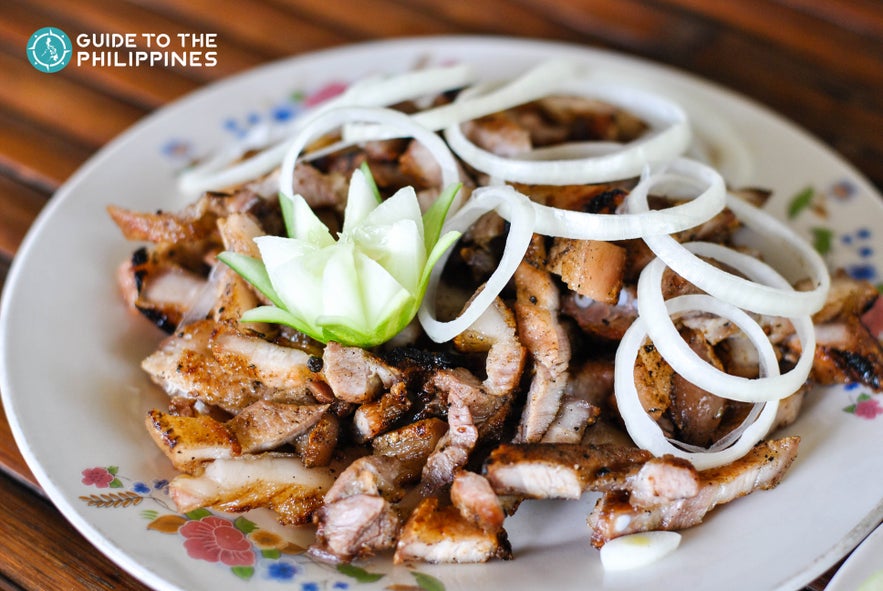 Filipino food’s regionality, seasonality, and locality make it a subject that can’t be explained in a few examples and sentences, hence its latent mystery, but that is part of its charm.
Filipino food’s regionality, seasonality, and locality make it a subject that can’t be explained in a few examples and sentences, hence its latent mystery, but that is part of its charm.
There are Filipino food gems to find in every trip and experience in the Philippines and the list above, while already impressive, is just a mere appetizer to get people started.
Filipino food is the perfect complement to the Philippines’ majestic views and the Filipino people’s graciousness as hosts. While it may be impossible to try every version of adobo, kilawin, or batchoy, it is the most fun journey to try.
Go on a food adventure around the Philippines when you book food tours with Guide to the Philippines, a DOT-accredited Philippines travel agency offering Philippines guided tours for hassle-free online trip booking.
Explore the best places to visit in the Philippines via Philippines food tours that you can add to your Philippines trip package itinerary (perfect as rainy season activities in the Philippines too) and taste authentic Filipino food! Browse our wide selection of vacation packages for couples, all inclusive family vacation packages in 5 star hotels in the Philippines. Check out other reasons why you should visit the Philippines.
Before you plan your trip, take note of the latest Philippines travel requirements so you can have a smooth entry at Philippine airports.

